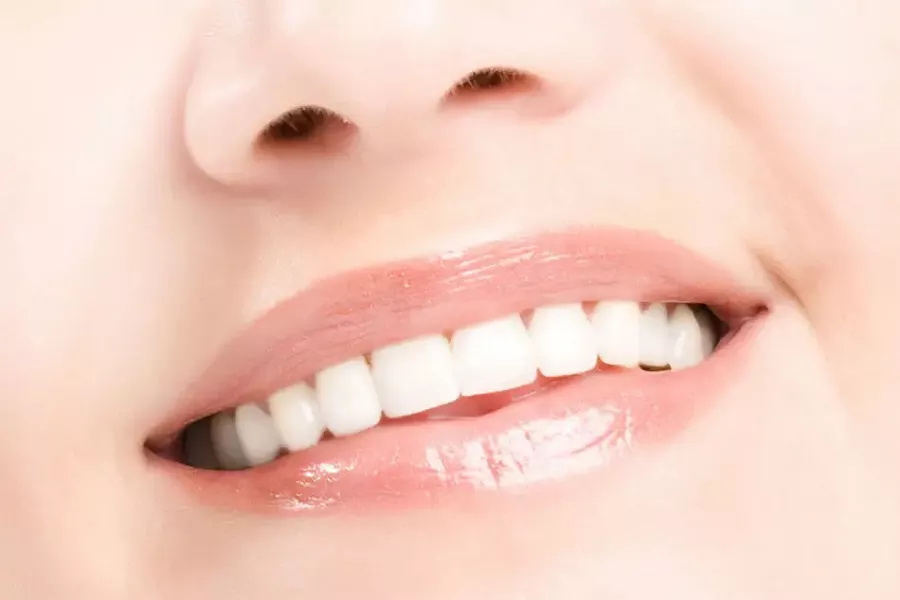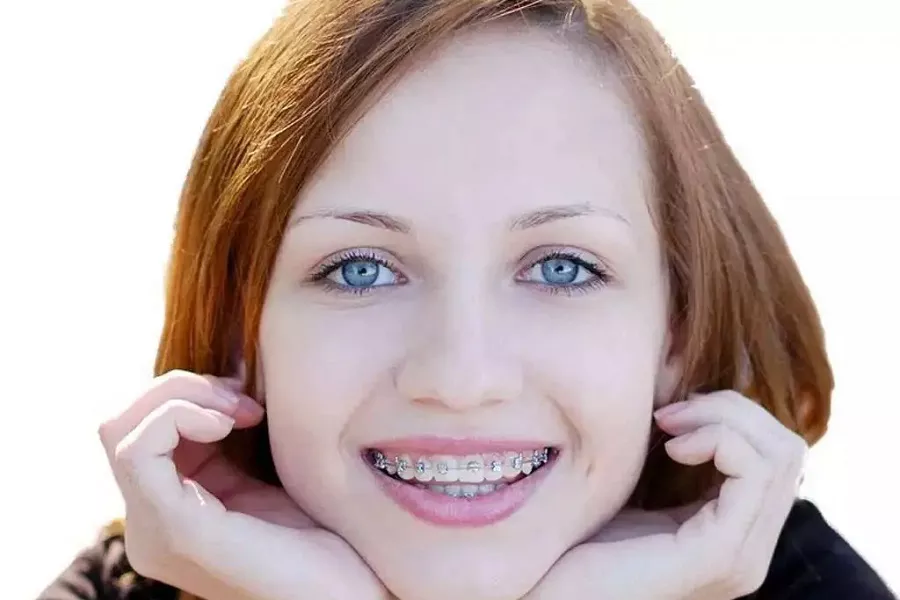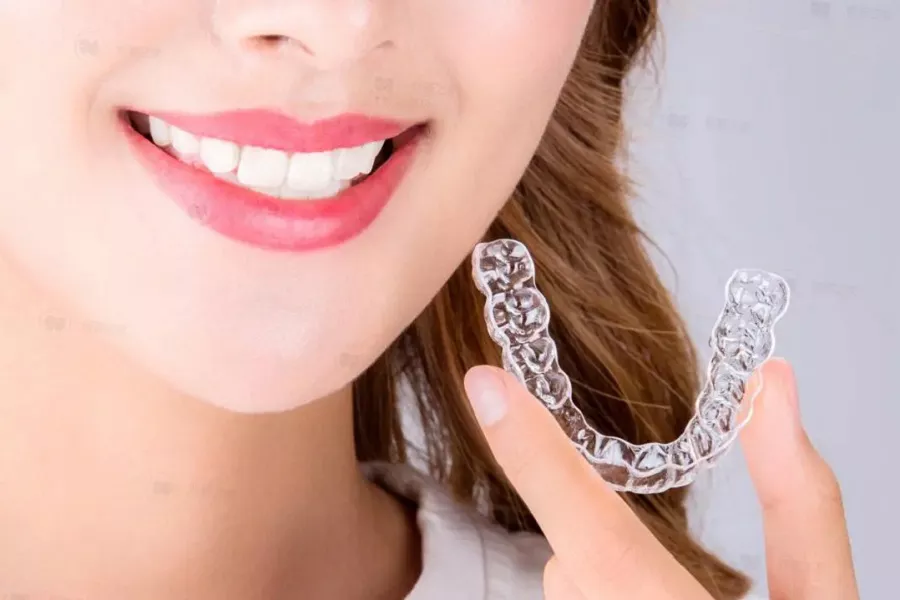Many traditional concepts believe that teeth can only be straightened after the age of 12, which makes many parents tangled and hesitant, but following the analysis of the scientific laws of modern clinical medicine, 20 kinds of dental and jaw deformities or abnormalities must be found and corrected before the age of 12. Don’t hesitate!
Severe buck teeth (violent) teeth: buck teeth patients are very unconfident, so they dare not communicate with others or laugh, which greatly affects their studies and social interaction. Some children become inferior and should be corrected in time.
Severe crowding of teeth in the mixed dentition stage: mild crowding in the mixed dentition stage is generally observable and not treated for the time being; severe cases are manifested as dislocation of individual or multiple teeth in all directions; and tooth crowding also hinders the cleaning of local teeth and is prone to occur. Tooth decay, gingivitis, etc.
Crossbite: commonly known as the ground wraps the sky; that is, the lower row of teeth wraps the upper row of teeth. Seriously affect the appearance of the face, lead to the decline of eating and chewing functions, increase the burden on the gastrointestinal tract, and thus affect the health of the body. Sometimes it affects pronunciation, gets ridiculed, and affects mental health. Individual crossbite: that is, individual incisors or two teeth crossbite, which is extremely harmful. Will affect the normal development of the upper face, the upper lip sunken. Moreover, its potential harm is most likely to lead to the development of temporomandibular joint disorders in children in their 30s and 40s.
Bilateral jaw: Due to caries or missing teeth on one side, eating with the other side for a long time or other reasons results in asymmetrical bilateral faces, which seriously affects the child’s mental health and self-esteem.
Mandibular retraction: underdeveloped jaw, small chin, commonly known as beak. It affects the beauty of the face. At the same time, because the lower teeth are arranged too narrowly, the development of the upper teeth is restricted, and the function is also affected.
Premature loss of deciduous teeth: The premature loss of deciduous teeth before the replacement time will lead to insufficient development of the local jaw, and the position of the missing teeth may be partially or even fully occupied due to the displacement of adjacent teeth, resulting in the formation of misplaced eruption of permanent teeth or impacted ambush. Dental deformities.
Retention of deciduous teeth: The deciduous teeth have not fallen out and abdicated when the replacement time is reached, which leads to the obstruction of the eruption of the successor permanent teeth, abnormal eruption sequence, or misplaced eruption, or ambush impacted, resulting in incorrect tooth arrangement and occlusion.
Mouth breathing during sleep: This disease is mostly due to nasal obstruction or adenoid hypertrophy and other reasons causing poor nasal breathing, which can cause lip eversion, short and thick lips, high upper palate, narrowing of the face, protrusion, long face, The chin is retracted and the back teeth cannot be clenched together.
Supernumerary teeth: There are extra teeth in the mouth, especially between the upper incisors. The supernumerary teeth are mostly deformed teeth, they occupy the position of normal teeth, causing these normal teeth to appear misplaced or eruption failure.
Non-erupted or impacted permanent teeth: Impacted teeth are teeth that are partially or completely unable to erupt, and cannot erupt later. Incisors are more common in childhood. It can be improved by methods such as sprouting or traction. Snoring during sleep: Snoring is due to nasal obstruction, incorrect breathing, and incorrect occlusion of the upper and lower teeth. Over time, it will lead to facial deformities, such as long and narrow faces, exposed lower teeth, open lips and teeth, etc., which will seriously affect the child’s appearance.
If the decayed tooth is not repaired in time: the position occupied by the deciduous tooth becomes smaller due to tooth decay, which will make the permanent tooth not have enough space when it erupts, so it will appear crowded and uneven, and even affect the replacement and eruption of the inherited permanent tooth. Therefore, the deciduous tooth needs to be filled.
Abnormal frenulum: The frenulum is attached between the outer gums and the alveolar mucosa between the two middle incisors in the upper row. If the child’s frenulum does not retreat with age, it will lead to the gap between the upper incisors. Larger gaps appear.
Tongue frenulum: a congenital developmental abnormality. Tongue frenulum is too short, so that the normal activities of the tongue are restricted, and in severe cases, the tongue cannot extend out of the mouth, or cannot touch the upper lip. Affects suckling, speech and pronunciation. Cleft lip and palate surgery: Cleft lip and palate surgery is not everything, and it is necessary to carry out a series of orthodontic treatment for several years in order to maximize the appearance and physical function. Bad lip habits: including biting the lower lip, sucking the lower lip, lower lip pocket and upper lip, etc. This results in an upper lip that is too short, a toothy open lip, and a retracted lower lip.
Bad finger-sucking habits: The child’s finger-sucking behavior continues after the age of 3, which will cause deformities such as the inclination of the front teeth and the protrusion of the upper and lower incisors of the child. In severe cases, it may affect the development of the upper and lower bones and cause facial deformities. Bad tongue habits: sticking out, sticking out, licking, and pushing the tongue are all bad tongue habits, which will cause the teeth to be out of place, protruding, interdental, misaligned, or flattened, etc., and must be corrected in time.
Premature loss of permanent teeth: The first permanent molar that a child grows, the first molar. Each person has 1 on each side, 1 on each side, and 4 on each side. Under normal circumstances, this tooth erupts around the age of six, so it is commonly known as the six-year-old tooth. Sixth-year-old teeth; the highest rate of caries, the proportion of extraction and the incidence of other dental diseases are higher than other teeth. In terms of function, this tooth is the most important molar. Losing the sixth-year-old teeth will easily lead to uneven arrangement of the teeth, and the treatment will be much more difficult. Therefore, special attention should be paid to the protection of the sixth-year-old teeth.
Many traditional concepts believe that teeth can only be straightened after the age of 12, which makes many parents tangled and hesitant, but following the analysis of the scientific laws of modern clinical medicine, 20 kinds of dental and jaw deformities or abnormalities must be found and corrected before the age of 12. Don’t hesitate!
Severe buck teeth (violent) teeth: buck teeth patients are very unconfident, so they dare not communicate with others or laugh, which greatly affects their studies and social interaction. Some children become inferior and should be corrected in time.
Severe crowding of teeth in the mixed dentition stage: mild crowding in the mixed dentition stage is generally observable and not treated for the time being; severe cases are manifested as dislocation of individual or multiple teeth in all directions; and tooth crowding also hinders the cleaning of local teeth and is prone to occur. Tooth decay, gingivitis, etc.
Crossbite: commonly known as the ground wraps the sky; that is, the lower row of teeth wraps the upper row of teeth. Seriously affect the appearance of the face, lead to the decline of eating and chewing functions, increase the burden on the gastrointestinal tract, and thus affect the health of the body. Sometimes it affects pronunciation, gets ridiculed, and affects mental health. Individual crossbite: that is, individual incisors or two teeth crossbite, which is extremely harmful. Will affect the normal development of the upper face, the upper lip sunken. Moreover, its potential harm is most likely to lead to the development of temporomandibular joint disorders in children in their 30s and 40s.
Bilateral jaw: Due to caries or missing teeth on one side, eating with the other side for a long time or other reasons results in asymmetrical bilateral faces, which seriously affects the child’s mental health and self-esteem.
Mandibular retraction: underdeveloped jaw, small chin, commonly known as beak. It affects the beauty of the face. At the same time, because the lower teeth are arranged too narrowly, the development of the upper teeth is restricted, and the function is also affected.
Premature loss of deciduous teeth: The premature loss of deciduous teeth before the replacement time will lead to insufficient development of the local jaw, and the position of the missing teeth may be partially or even fully occupied due to the displacement of adjacent teeth, resulting in the formation of misplaced eruption of permanent teeth or impacted ambush. Dental deformities.
Retention of deciduous teeth: The deciduous teeth have not fallen out and abdicated when the replacement time is reached, which leads to the obstruction of the eruption of the successor permanent teeth, abnormal eruption sequence, or misplaced eruption, or ambush impacted, resulting in incorrect tooth arrangement and occlusion.
Mouth breathing during sleep: This disease is mostly due to nasal obstruction or adenoid hypertrophy and other reasons causing poor nasal breathing, which can cause lip eversion, short and thick lips, high upper palate, narrowing of the face, protrusion, long face, The chin is retracted and the back teeth cannot be clenched together.
Supernumerary teeth: There are extra teeth in the mouth, especially between the upper incisors. The supernumerary teeth are mostly deformed teeth, they occupy the position of normal teeth, causing these normal teeth to appear misplaced or eruption failure.
Non-erupted or impacted permanent teeth: Impacted teeth are teeth that are partially or completely unable to erupt, and cannot erupt later. Incisors are more common in childhood. It can be improved by methods such as sprouting or traction. Snoring during sleep: Snoring is due to nasal obstruction, incorrect breathing, and incorrect occlusion of the upper and lower teeth. Over time, it will lead to facial deformities, such as long and narrow faces, exposed lower teeth, open lips and teeth, etc., which will seriously affect the child’s appearance.
If the decayed tooth is not repaired in time: the position occupied by the deciduous tooth becomes smaller due to tooth decay, which will make the permanent tooth not have enough space when it erupts, so it will appear crowded and uneven, and even affect the replacement and eruption of the inherited permanent tooth. Therefore, the deciduous tooth needs to be filled.
Abnormal frenulum: The frenulum is attached between the outer gums and the alveolar mucosa between the two middle incisors in the upper row. If the child’s frenulum does not retreat with age, it will lead to the gap between the upper incisors. Larger gaps appear.
Tongue frenulum: a congenital developmental abnormality. Tongue frenulum is too short, so that the normal activities of the tongue are restricted, and in severe cases, the tongue cannot extend out of the mouth, or cannot touch the upper lip. Affects suckling, speech and pronunciation. Cleft lip and palate surgery: Cleft lip and palate surgery is not everything, and it is necessary to carry out a series of orthodontic treatment for several years in order to maximize the appearance and physical function. Bad lip habits: including biting the lower lip, sucking the lower lip, lower lip pocket and upper lip, etc. This results in an upper lip that is too short, a toothy open lip, and a retracted lower lip.
Bad finger-sucking habits: The child’s finger-sucking behavior continues after the age of 3, which will cause deformities such as the inclination of the front teeth and the protrusion of the upper and lower incisors of the child. In severe cases, it may affect the development of the upper and lower bones and cause facial deformities. Bad tongue habits: sticking out, sticking out, licking, and pushing the tongue are all bad tongue habits, which will cause the teeth to be out of place, protruding, interdental, misaligned, or flattened, etc., and must be corrected in time.
Premature loss of permanent teeth: The first permanent molar that a child grows, the first molar. Each person has 1 on each side, 1 on each side, and 4 on each side. Under normal circumstances, this tooth erupts around the age of six, so it is commonly known as the six-year-old tooth. Sixth-year-old teeth; the highest rate of caries, the proportion of extraction and the incidence of other dental diseases are higher than other teeth. In terms of function, this tooth is the most important molar. Losing the sixth-year-old teeth will easily lead to uneven arrangement of the teeth, and the treatment will be much more difficult. Therefore, special attention should be paid to the protection of the sixth-year-old teeth.
Reminder: For more knowledge about dental malocclusion, misaligned teeth, underbite, please pay attention to: padmel.com, to provide you with comprehensive professional orthodontic care, tooth filling, orthodontic treatment and other dental care.





























